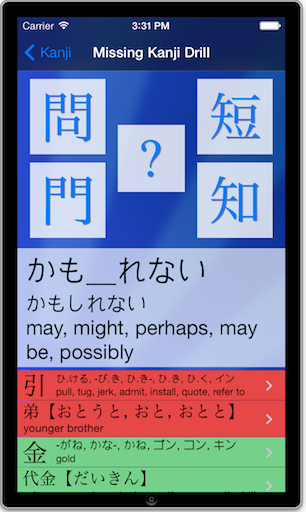As you probably know if you are planning to take JLPT in the near future, the test has received a massive overhaul this year. Among other major changes (along with new passing requirements etc), was the introduction of a new level breakdown, replacing the old 4級-1級 (“4-kyuu” etc., henceforth referred to as J4-J1, for simplicity’s sake):
N1: the same passing level as the original level 1, but able to gauge slightly more advanced skills, possibly through equating of test scores.
N2: the same as the original level 2
N3: in between the original level 2 and level 3
N4: the same as the original level 3
N5: the same as the original level 4
Source: official guidelines, via Wikipedia
As you can see, the only real change is the addition of a new intermediate N3 level, between former J2 and J3 levels.
Unfortunately, another feature was introduced in the revised JLPT: there are no official content specification, “so as to discourage people from studying exclusively from lists of words of kanji”1. This means there is absolutely no way to know what words and kanji belong to level N3 (for our sake, we will pretend that the lists inherited from former levels, wouldn’t change all that much, since the required proficiency level remains the same).
What about all these webpages/applications that have “N3 Vocabulary/Kanji Lists” etc.?
They are all 100% based on guesswork. How sound a guesswork, depends a lot on the site/application (some lists out there are particularly wonky), as well as the section concerned: kanji can be reasonably broken down from the original J2 set (about 750 kanji) into two sets of approximately equal size using native Japanese school levels (grade 3 and 4 make N3, while grade 5 and 6 belong to N2). For vocabulary lists, however, there is no easy way to separate: most sites use newspaper word frequency to make their guess, a criterion that is anything but reliable, if past levels are any indication.
What about those textbooks that offer preparation for N3?
It is very *cough* unclear how publishers know what words and kanji to include in their N3 textbooks. On the off chance that they know what they are doing, we (the KanjiBox community at large) have started compiling lists of kanji and words spotted in N3 textbooks (as well as official exams and mock exams). But as you can imagine, it will be some time before such lists can reach sufficient maturity to be used in KanjiBox (feel free to contribute, though!).
So, what about KanjiBox, then?
Here is the plan for future versions of KanjiBox, with regard to revised JLPT levels:
1. In a near future, KanjiBox will start using new JLPT level names. Meaning that J4, J3, J2, J1 will become N5, N4, N2 and N1 respectively. Absolutely nothing about each level content will change.
2. Within a few months, KanjiBox will start offering an “experimental” N3 level, with lists based on a mix of guesswork and textbook curation (see above).
In the meantime, I would recommend people planning to take N3 to first set their goal at J3 and later update their settings to J2 (keeping in mind that N3 should cover considerably content than former J2, but since there are no clear lists, it cannot hurt to extend your knowledge a little).
PS: since we are on the topic of levels: many people have contacted me to request the possibility of setting separate levels for each mode (kanji, vocab etc). This is coming! (most likely in the next upgrade, sometime in October).
- A laudable goal, really… made ever so slightly suspicious by the fact that it hasn’t stopped publishers from putting out revised JLPT textbooks that mysteriously seem to know exactly what content belongs to what level. But only the most cynical minds would suggest some collusion between JLPT people and their publisher buddies, with lists changing hands over sake and dinner. So we won’t. [↩]

